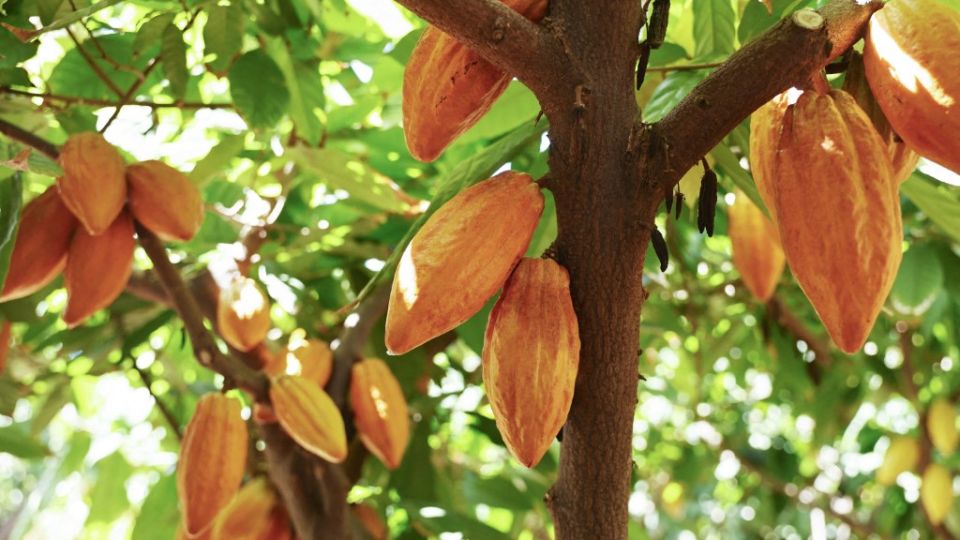July 29, 2025
JAKARTA – Indonesia’s cocoa industry is in dire need of rejuvenation and replanting to take advantage of a global supply dearth keeping prices at a new, elevated equilibrium.
Most plantations in the country are close to exceeding the cacao plant’s productive age of 25 years, according to Soetanto Abdoellah, chairman of the Indonesian Cocoa Board.
“The situation is this: the majority of Indonesia’s cacao plantations are above 20 years old, hence the need for rejuvenation,” Soetanto told The Jakarta Post on Monday.
President Prabowo Subianto said on July 20 that the government would push for nationwide cacao rejuvenation and replanting.
“Global chocolate prices are very high, and many are expecting chocolate from us. We have to [start] replanting soon, rejuvenation, and we will carry out these measures,” said the President.
Read also: Prabowo urges cacao rejuvenation, replanting amid high prices
Cocoa prices surged since early last year as a result of crop failures in major producing countries in West Africa, which currently account for around 60 percent of global supply.
According to Investing.com, United States cocoa futures began climbing in January 2024 and reached what was then a record high of US$9,766 per tonne in March.
Yet they rose further, hitting a historic high of $11,675 per tonne in December last year, but have since descended a bit to trade between $7,800 and $10,800 during the first half of this year. On July 17, the price hit this year’s low of $7,300 per tonne but ticked back up to around $8,300 10 days later.
The International Cocoa Organization (ICCO), an intergovernmental body comprising 51 member states responsible for most of the global cocoa trade, released data in June that showed comparatively low production in the crop year from October 2023 to September 2024.
The ICCO estimated global production at 4.3 million tonnes that crop year, a 13 percent drop from 5 million tonnes a year prior.
The decline was attributed to production issues in Ivory Coast and Ghana, two of the world’s largest producers, which continue to struggle with structural issues like aging trees, diseases and limited rejuvenation efforts.
ICCO forecasts world gross production at 4.8 million tonnes in the 2024-2025 crop year. It noted that the April-to-September period, known as the Ivorian mid-crop season, was a thing to watch, as “it will be critical in shaping the global cocoa balance” for the crop year.
Cocoa truck arrivals at Ivory Coast’s ports matched that of last year leading up to the mid-crop season, which may signal improved production.
However, the ICCO questioned whether arrivals were a reliable proxy for actual production, since reports of low-quality beans raised “the possibility that consignments rejected by some exporters may have been accepted by others, potentially leading to double counting and artificially inflating arrival figures”.
“In the absence of official public data on cocoa production for the current season from producing countries, interpreting arrivals data should be approached with caution,” reads the ICCO’s Cocoa Market Report for June.
Recently, low arrivals at Ivorian ports fueled short-term supply concerns that drove cocoa futures up by 8 percent in London and New York markets.
A recovery of harvests in West Africa is crucial to restoring market stability, otherwise, limited stocks would spur another price increase, unless demand falls further.
Demand has taken a hit over the past 12 to 15 months, as the high prices prompted some companies to substitute chocolate with other ingredients, Tropical Research Services’ Steve Wateridge was cited as saying by CNBC Indonesia on July 21.
While down somewhat from the recent record high, future prices remain at a multiple of the $2,400 to $4,300 price range registered from 2020 to 2023.
Read also: High cocoa price underpins exports, trade surplus
The third-largest cocoa beans exporter, Indonesia has enjoyed an export windfall from the price surge cause by the gap in supply left by Ivory Coast and Ghana. In 2024 alone, the archipelago exported $2.64 billion worth of cocoa products, more than double that of the preceding year, according to Statistics Indonesia (BPS).
Indonesian cocoa product exports reached $1.6 billion in the first five months of 2025, far more than $1.2 billion in the entirety of 2023, despite the archipelago having only shipped out 144,000 tonnes in terms of volume, which is less than half of 2023’s 340,000 tonnes.
The Indonesian Cocoa Board’s Soetanto said that, on the ground, bean prices “may have reached a new equilibrium”, which he approved of since “it’s still profitable for farmers but affordable for the grinding industry”.
He went on to say that government assistance was needed in rejuvenation and replanting efforts, particularly in the form of guidance and upskilling for farmers. In addition, he urged the government to provide production means, such as seeds, fertilizer, irrigation infrastructure and pesticides.
Subsidies existed for seeds and fertilizer, Soetanto said, “but the amount is still lacking”.
The Agriculture Ministry’s Plantation Directorate General was not immediately available for comment when contacted by the Post.
Indonesian Cacao Association (Askindo) chairman Arief Susanto told the Post on Monday that the government could help with rejuvenation and replanting efforts by increasing and easing access to seeds.
Moreover, the government could also help by “maintaining the competitiveness of Indonesia’s cocoa products in the global market”, for example by negotiating a zero-percent import tariff with the US, since the upstream product cannot be produced on US soil.
Indonesia recently agreed on a bilateral trade deal with Washington that imposes a 19 percent US import duty for Indonesian exports to the US, but Jakarta is still lobbying for exemptions for certain products, including cocoa, coffee, rubber, crude palm oil and nickel.


